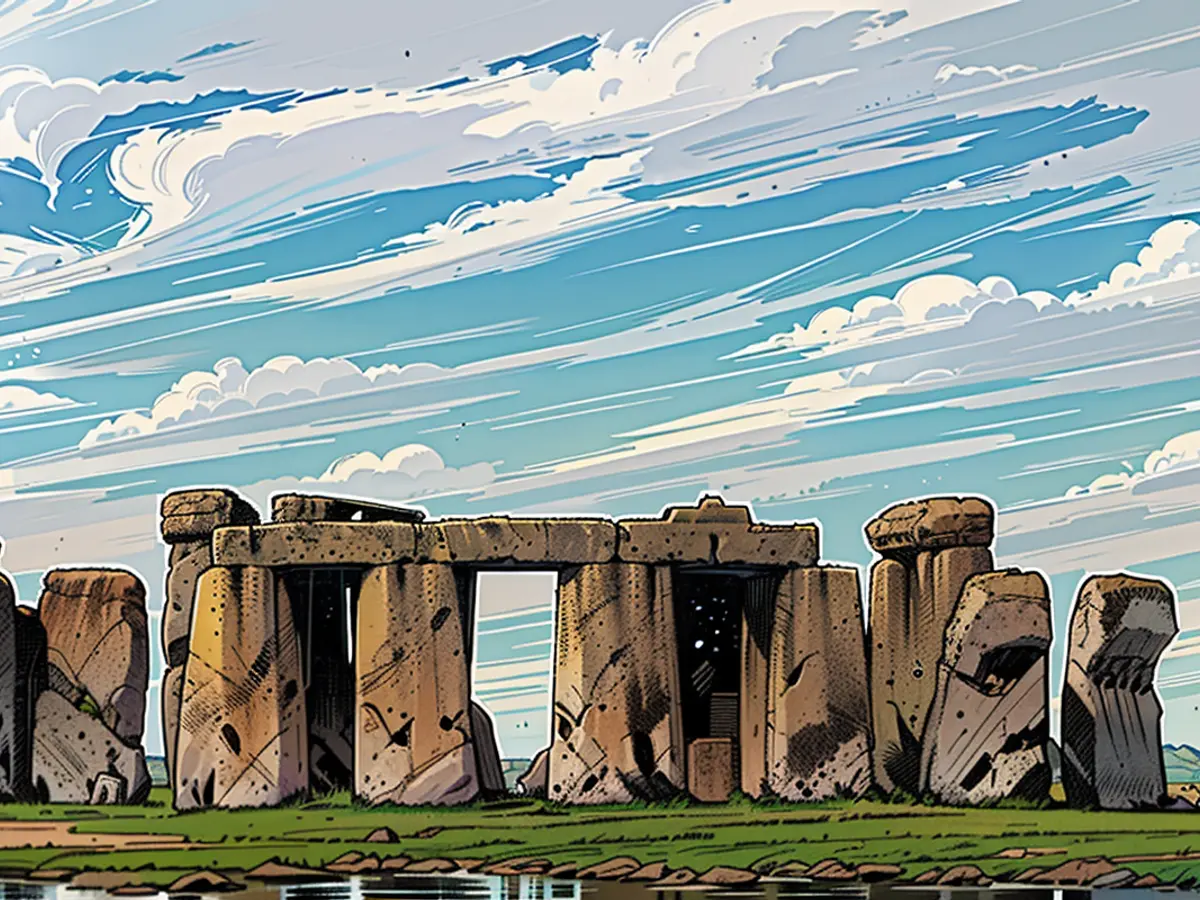Researchers uncover the mystery surrounding the altar stone at Stonehenge
Scientists know little about the famous Stonehenge. Now they have to throw one of their previous findings out the window. For 100 years, they believed the altar stone came from Wales. That's not true. It was apparently on a 740-kilometer journey.
The ritual significance of Stonehenge remains a mystery, but scientists have made progress in understanding the origin of the famous stone circle. The so-called altar stone, which lies flat in the center of the monument, was brought from the northeast of Scotland to the site in southern England, as reported in the journal "Nature". Whether the five-meter stone was transported by boat or land is unclear - it's a journey of over 740 kilometers.
"It's a surprise that it comes from so far away," said archaeologist Susan Greaney of the University of Exeter, who was not involved in the study. For over a hundred years, scientists believed that the central sandstone slab of Stonehenge - known as the altar stone - came from the much closer Wales. A study conducted last year by the same researchers showed that the stone does not match the geology of the sandstone formations in Wales. The actual origin of the stone remained unknown until now.
The team was not allowed to remove any rock from the monument, so they analyzed minerals in rock fragments collected from previous excavations, some dating back to the 1840s. They found a match with the sandstone formations of the Orkadian lakes in the northeast of Scotland, a region that includes parts of the tip of the Scottish peninsula and the Orkney Islands.
"This geological fingerprint is found nowhere else in Britain," said geologist Nick Pearce of Aberystwyth University, a co-author of the study. Greaney explained that the logistics of transporting the stone over such a long distance indicate a high degree of coordination and cultural connection between these two regions of ancient Britain.
No Feasts at Stonehenge
Stonehenge was built around 5000 years ago. The stones that form several circles were brought to the site at different times. The arrangement of the stones allows the sun to rise through a stone "window" during the summer solstice. The purpose of the altar stone - which lies flat at the heart of Stonehenge, now under other stones - remains a mystery.
"Stonehenge is not a settlement site, but a place of ceremony or ritual," said Heather Sebire, senior curator at English Heritage, who was not involved in the study. Previous archaeological excavations have not found evidence of feasts or daily life at the site.
Previous research showed cultural connections - such as similarities in pottery - between the area around Stonehenge and the Scottish Orkney Islands. Other stones in Stonehenge come from West Wales.
While there are other neolithic stone circles in Britain, "what's special about Stonehenge is the distance the stones have traveled," explains Richard Bevins of Aberystwyth University, one of the co-authors of the study.
The groundbreaking discovery has challenged the long-held belief about the origin of the altar stone at Stonehenge. Contrary to previous assumptions, the central sandstone slab, known as the altar stone, was not sourced from Wales but originated from the Orkadian lakes in the northeast of Scotland.
Despite the revelation, the ritual significance of Stonehenge continues to elude scientists, with the purpose of the altar stone remaining shrouded in mystery.









